Friday, March 3 was a chore day for us. Here was the sunset.
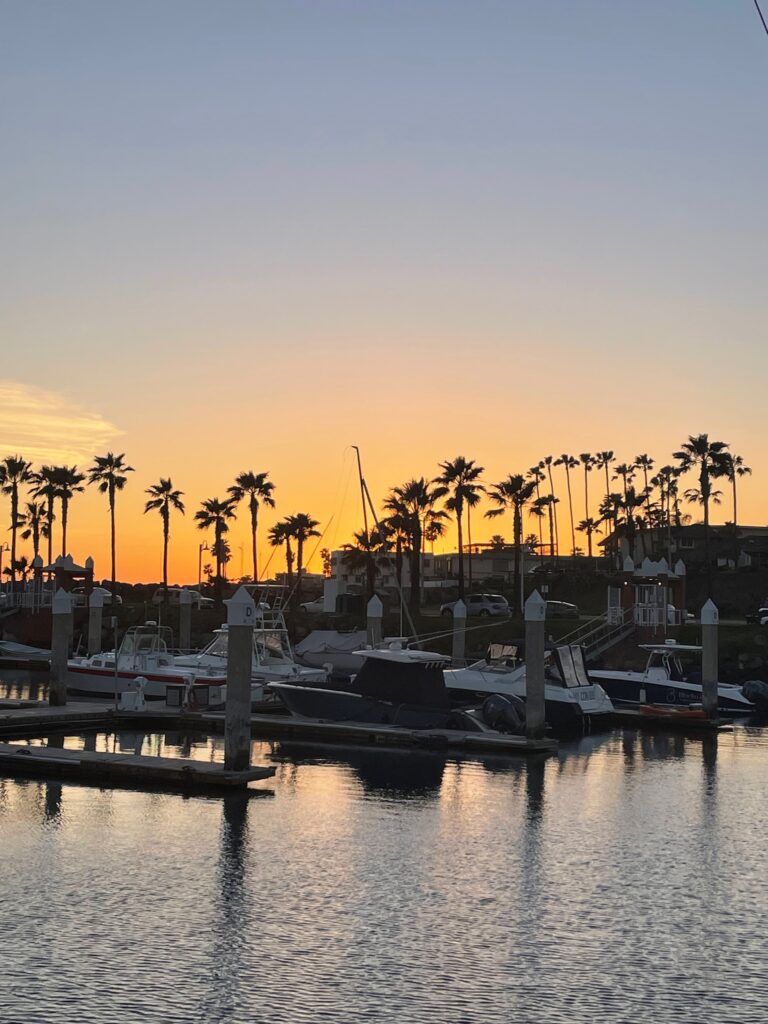
On Saturday, March 4, we went to breakfast at our second favorite restaurant, Los Veleros. It is cheerfully decorated with bright, colorful paintings of sailboats. It was also packed. One of the reasons Los Veleros was so popular for breakfast was because they dropped off a tray of pastries at the table (the pastries weren’t included in the meal price, but you only paid for them if you ate them), and a quesadilla appetizer was included with the meals. We went there specifically to get the flaming fruit desserts, but we had forgotten that they don’t offer them at breakfast time.
After eating, we walked next door to the new science museum. It was a large building, and there was scaffolding up and construction workers outside working on the building, so it clearly was not completely done yet. Admission was about $3.50 USD.
Once inside, we were ushered into a room titled “The Earth” with state-of-the-art exhibits in both Spanish and English. The first sign said that the Baja peninsula was 6 million years old (which contradicts what we thought we read at the archaeology museum. But, since our Spanish is poor, we could have misread the archaeology museum’s signs). The sign also said that Baja was the second longest peninsula and the most geographically isolated peninsula. Several exhibits gave a very simplistic explanations of how the earth formed and its make-up (ie, core, mantle, tectonic plates…), but the lion’s share of the exhibits focused on the geology of Baja.
Baja has 654 species of plants and 117 species/sub-species of reptiles. About 30% of the species are endemic. There were a few living creatures on display and several displays of fossils.
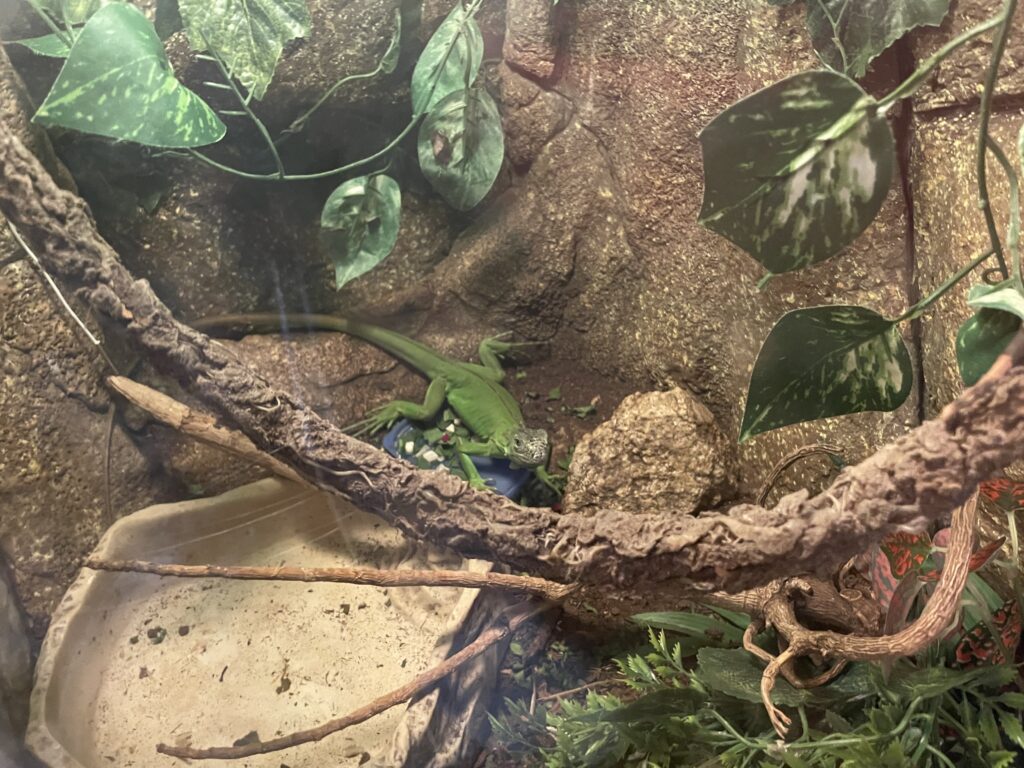
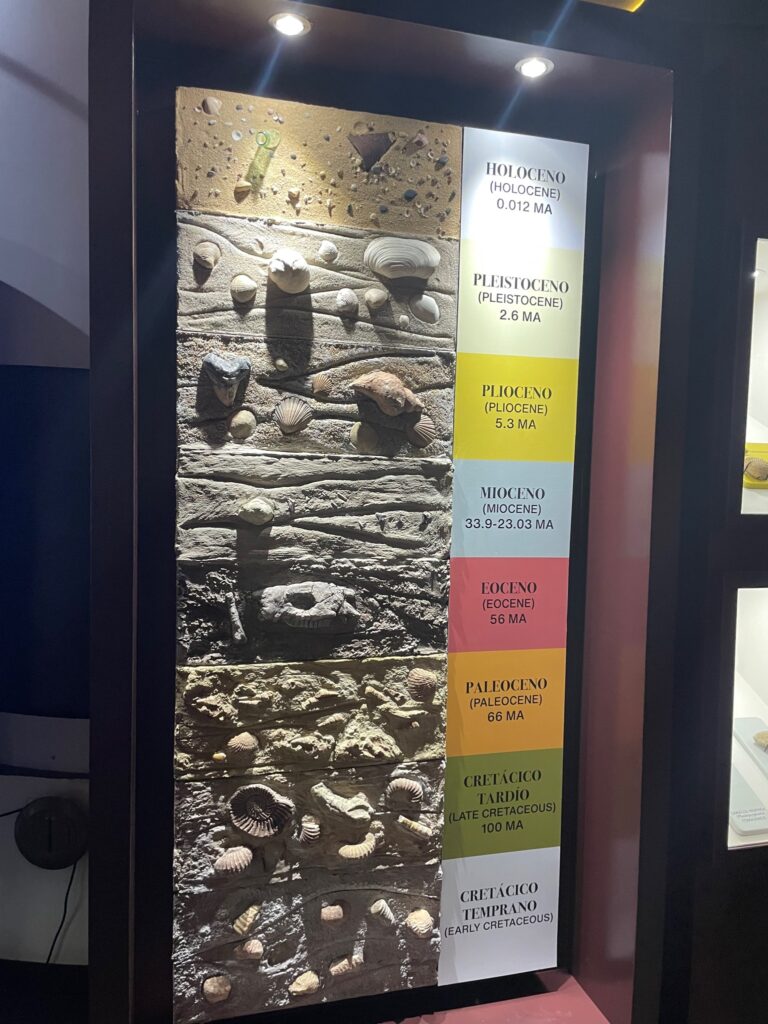
Baja has three weather climate regions: Mediterranean, Desert and Tropical, with 14 eco-regions (which we guess means sub-regions). There were displays describing each region and sub-region. There was a display on earthquakes and an earthquake simulator so that you could feel what it was like to be in an earthquake. One sign said that due to tectonic activity, Baja will eventually become an island.
There were a few relics from the indigenous people of the area.

There was a kid’s area with a sandpit where the kids could “dig up” fossils, but the signs were only in Spanish.
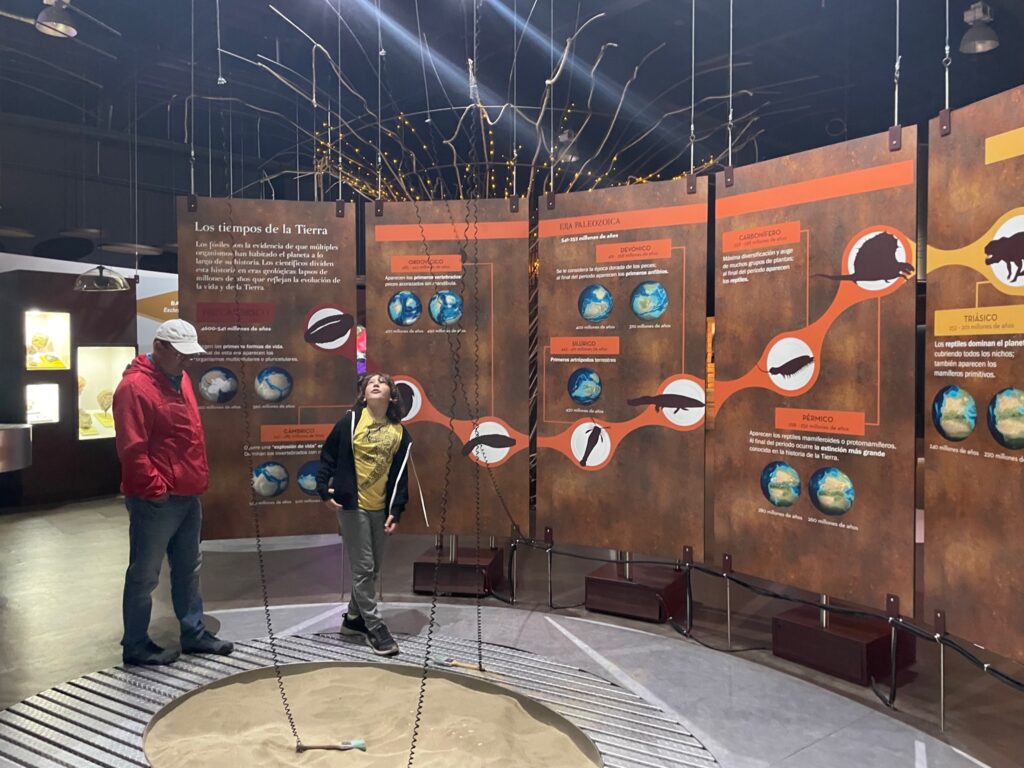
Someone escorted us to the next exhibit room while explaining that the room was still under construction. The second room focused on the ocean and seemed to be primarily geared towards children. There was an exhibit on tides, one on coral, one on algae, and exhibits describing the marine life in Baja’s waters. We saw a film about the aquarium that is currently under construction in another part of the building that likes like it will be really nice when it is done.
We were escorted to the room where they are building the aquarium so we could take a look at it, then upstairs to another room that was outer space themed. This room looked like it was also under construction. There were displays explaining observatories and telescopes. It looked like more exhibits were about to be installed about planets and stars. This room fed into a dome theater. We watched a film about the Ensenada area.
We only saw a small fraction of the building, so once it is done, it’ll probably be huge. As we were heading towards the bathroom, we caught a glimpse of another exhibit room under construction. On our way out, we passed a room that had was featuring the entries for a local wildlife photography contest. There were some beautiful photos.
After the museum, we walked down the malecon so Christi could see it. Here is a shot of Ensenada harbor from the southern end of the malecon. To the left is Cruiseport Marina and the cruise ship terminal, to the right are the industrial and military areas.
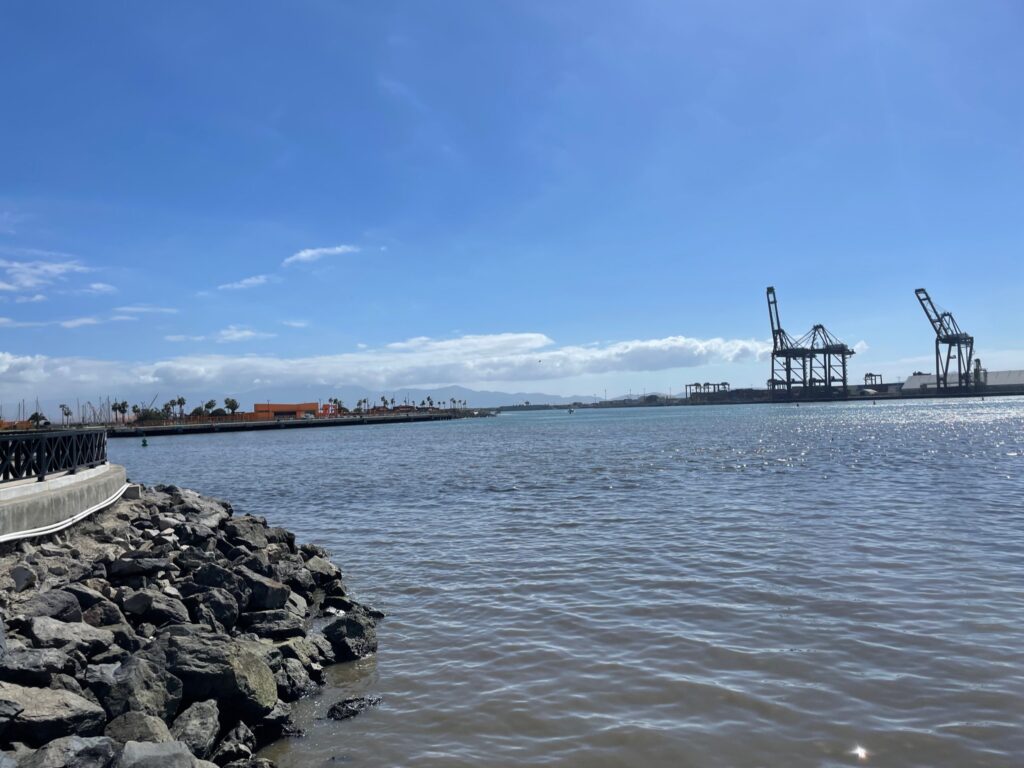
Christi was fascinated at the interesting retro-fitting that had to be done in order to create the malecon. For example, towards the north end were some boat yards, and the malecon cut right through the yards. There were draw bridges so the boats could go in and out.
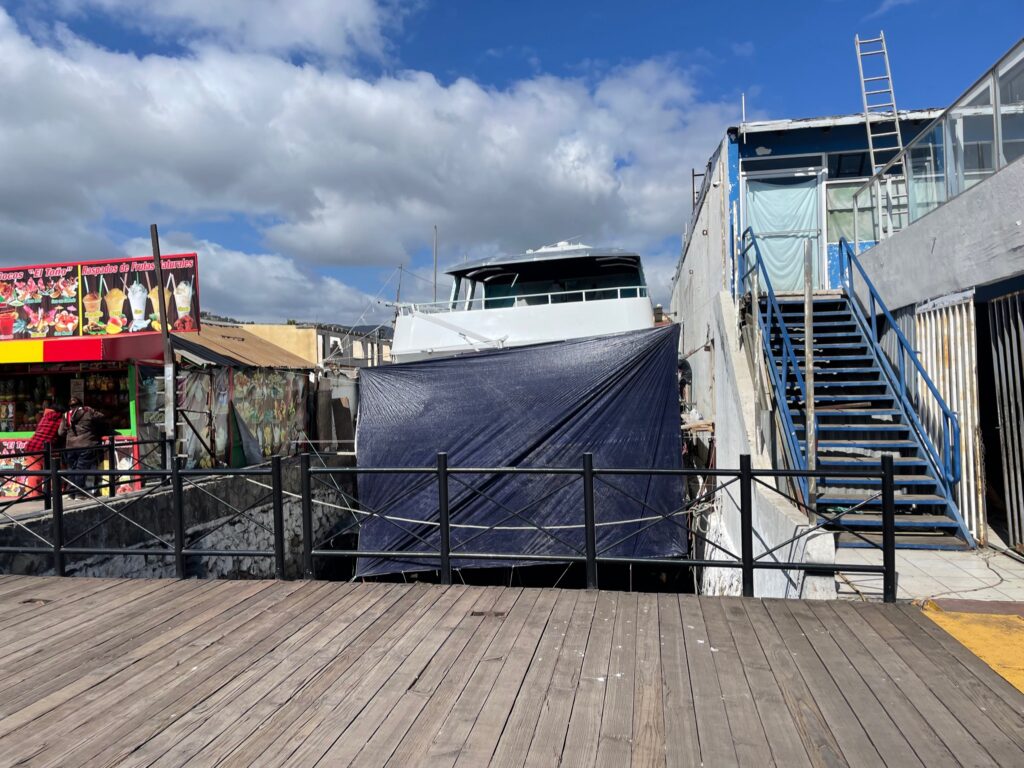
Likewise, the boat ramp had been blocked, so there was a draw bridge at the boat ramp, too.
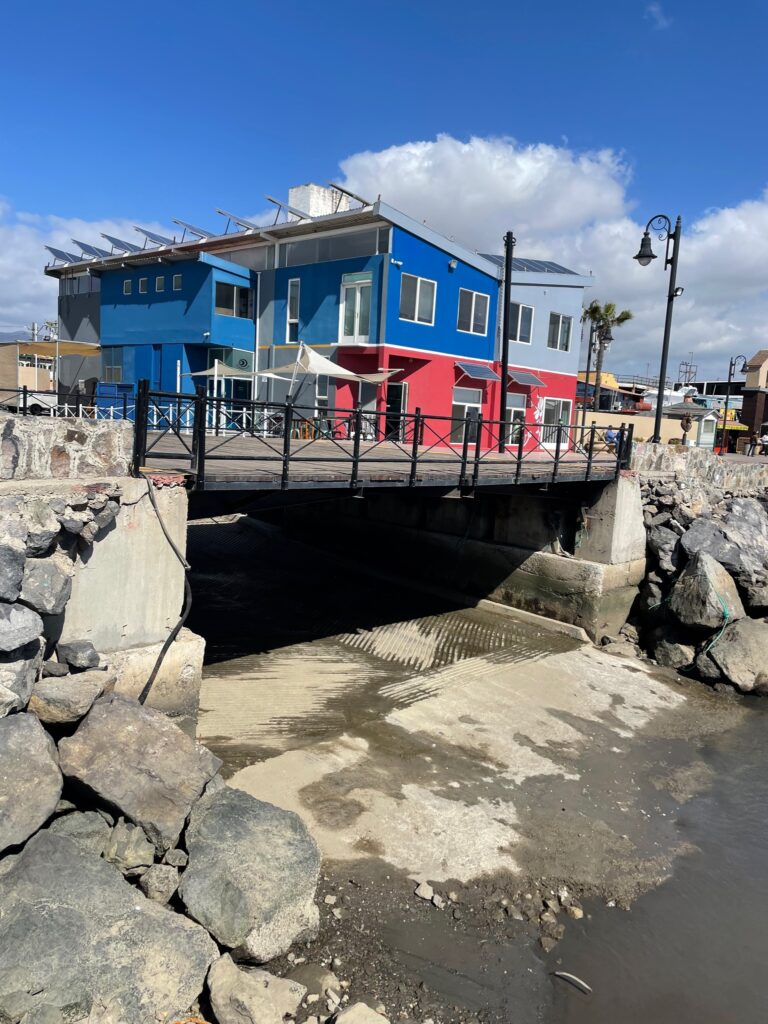
Here is another shot of Ensenada Harbor taken from the statue at north end of the malecon.

Keith wasn’t cooperating for photos
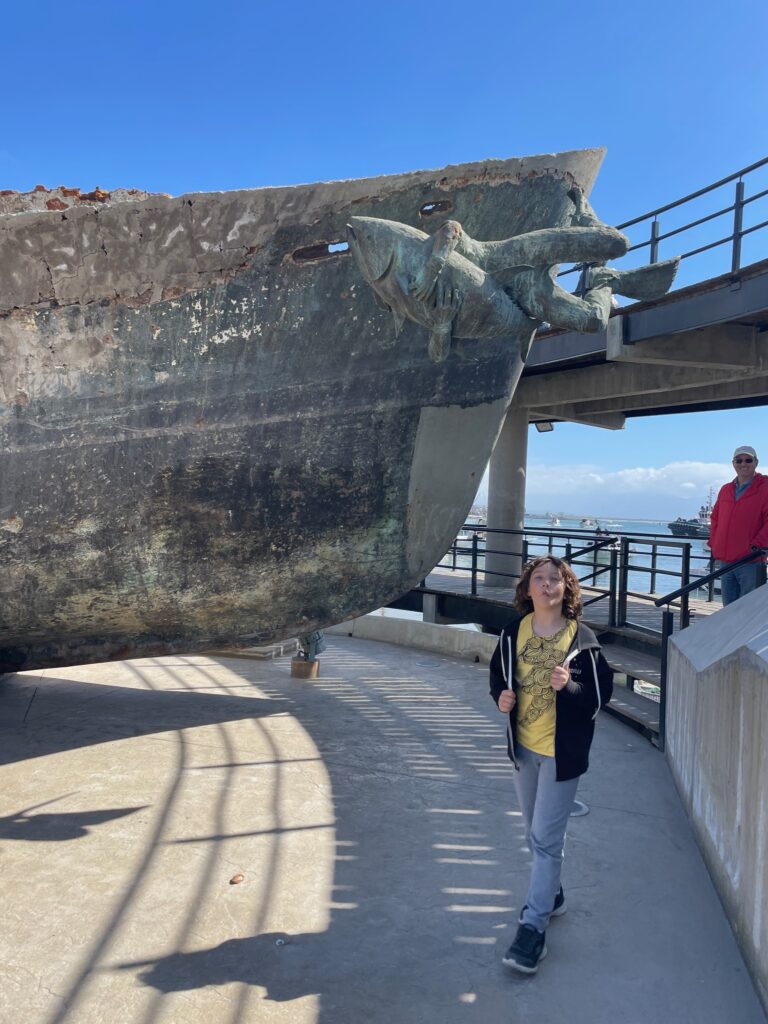
There was another statue at the top of the ramp that led above the boat statue. This woman was larger than a normal-size man.
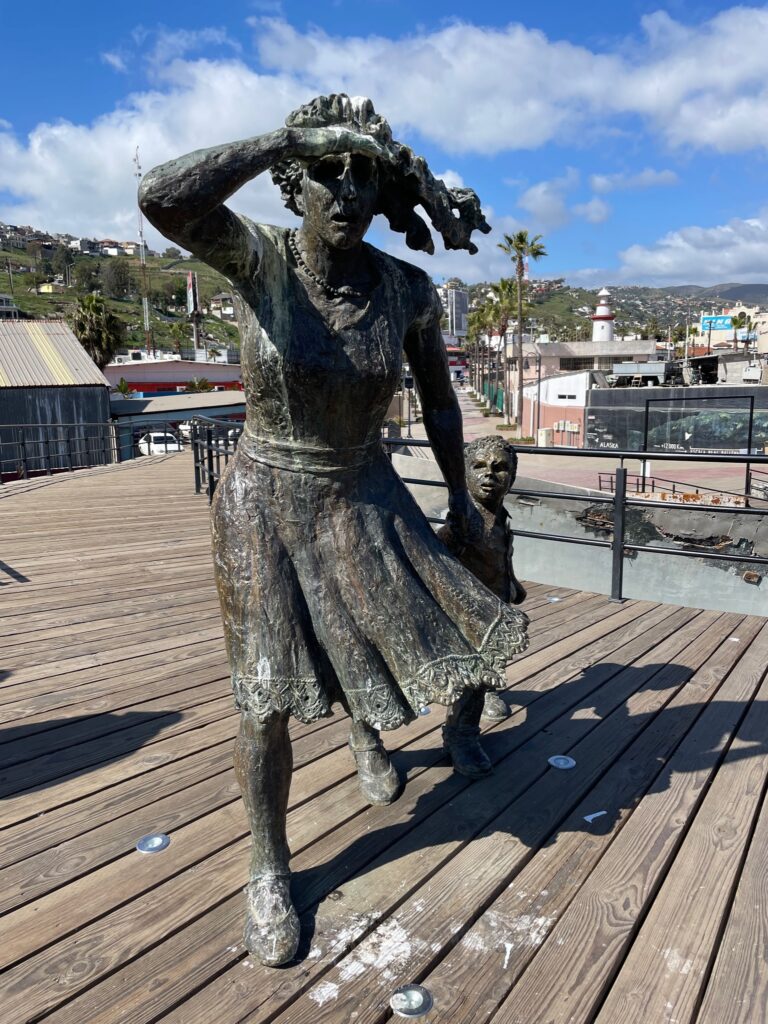
From there, we hailed an uber to take us back to the marina for the night.
